|
Urszula威尔克(波兰)新作品展
[2018-3-5 9:20:57]
上苑艺术馆2012年驻馆艺术家-Urszula威尔克(波兰)新作品展
1986–波兰弗罗茨瓦夫美术学院毕业
奖励和赠款:
2015–深圳国际水墨双年展 大奖赛获一等 中国
2014–获2013最佳奖, [波兰艺术家和设计师] 协会,弗罗茨瓦夫 波兰
2012 -获波兰文化和民族遗产部赠款
1995 -获克莱斯勒基金会赠款,纽约,美国
Wilk & Minciel_Muzeum Architektury 2018_koch image


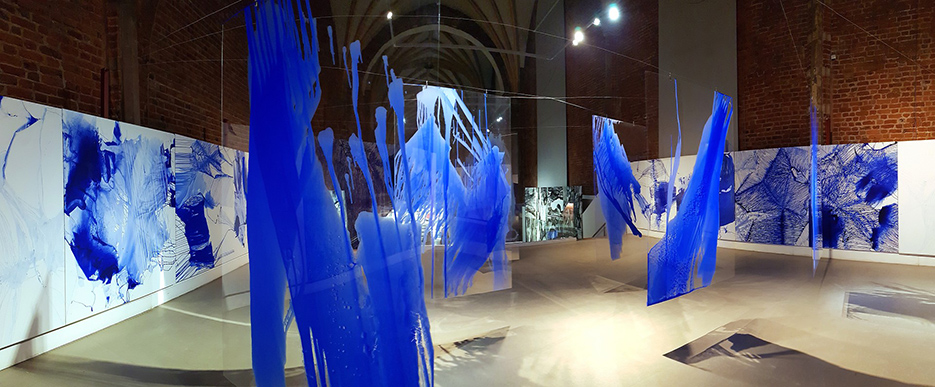
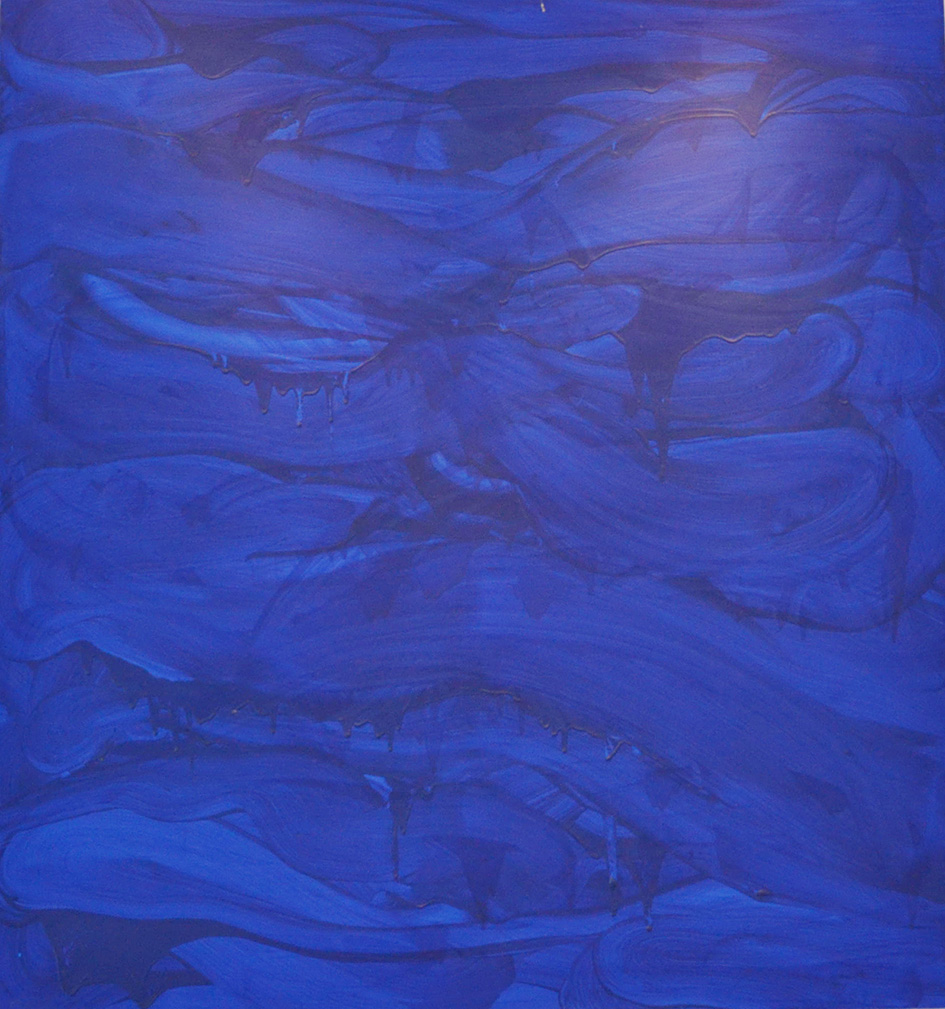
Wilk(波兰)-蓝色畅想1-布面丙烯-160x150cm-2012(上苑艺术馆收藏)

Wilk(波兰)-蓝色畅想1-布面丙烯-160x150cm-2012(上苑艺术馆收藏)
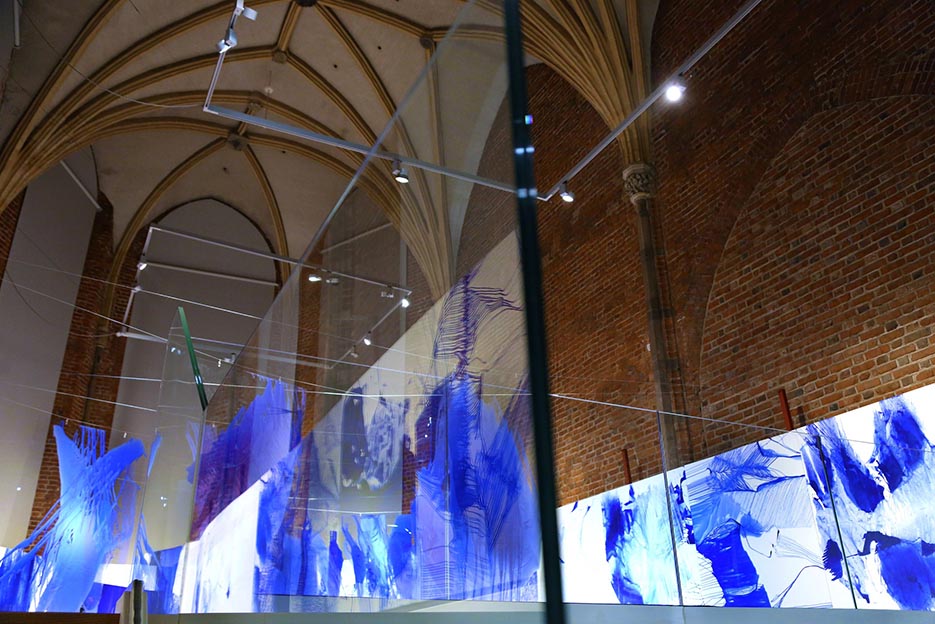
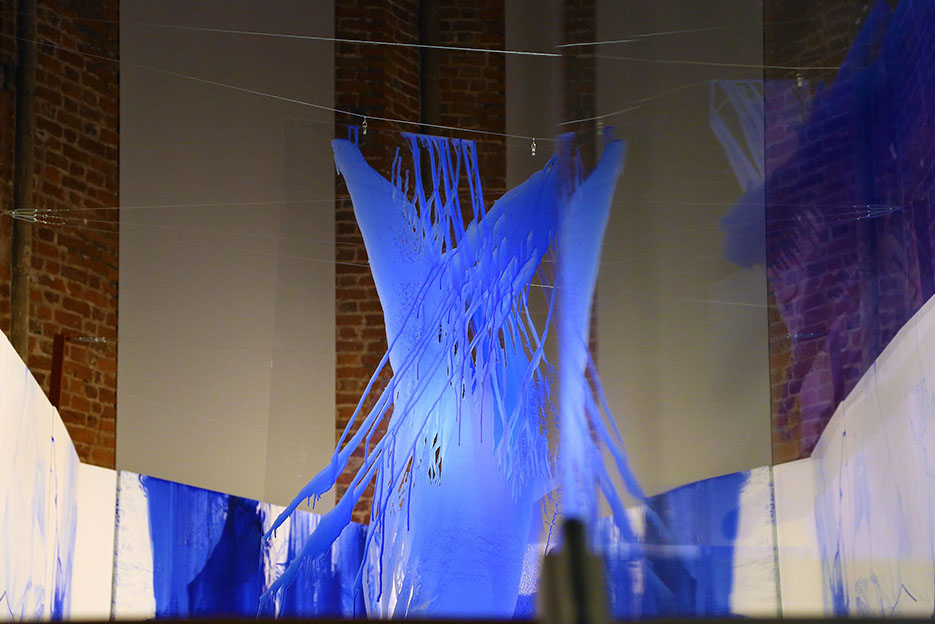
Awards and Grants:
2015 – Grand Prix, International Watercolour Biennale,
Shenzhen, China
2014 – The Best of 2013 Award, ZPAP
[Association of Polish Artists and Designers], Wrocław Region
2012 – Grant from the Polish Ministry of
Culture and National Heritage
1995 –The Pollock-Krasner Foundation Grant,
New York, USA
1989 – Grand Prix, 1st Eugeniusz Geppert Post-contest
Painting Exhibition
1988 – Grant from the Polish Ministry of
Culture and Art
1987 – Grant from the Polish Ministry of
Culture and Art
Selected solo exhibitions:
2016 – Lines, BWA Gallery, Sandomierz
2016 – Bluemetries, Neon Gallery, Academy of
Fine Arts, Wrocław
2015 – white-black, black-white, Museum of
Kłodzko Land, Kłodzko
2014 – Lines- Independent Painting Beings, BWA
Gallery, Gorzów Wielkopolski
2013 – Unsent Letters From Beijing, Entropia
Gallery, Wrocław
2013 – Lines, Wrocław International Airport,
Wrocław
2013 – Sonata for Four Rooms & BLUE, Newest
Art Gallery, Gorzów Wielkopolski
2013 – Nature’s Incredible Extravagance in
Using Blue, The City Museum, Wrocław
2012 – Lines, Shangyuan Art Museum, Beijing, China
2009 – Kościelak Gallery, Wrocław
2008 – Galerie Drei Eichen, Emern, Germany
2005 – Galerie Dominigue Lang, Luxemburg
2001 – Galerie 40, Wiesbaden, Germany
1999 – Bałtyk Art Gallery, Ustka
1997 – The State Art Gallery, Legnica
1997 –BWA Gallery, Nowy Sącz
1996 – Odwach Gallery, Wrocław
1995 – Altes Amtsgericht, Peterschagen, Germany
1995 – Brama Gallery, Warszawa
1993 – Mały Salon, BWA Gallery, Nowy Sącz,
1992 – Odwach Gallery, Wrocław
1991 – BWA Gallery, Wrocław
1989 – Upside down, BWA Gallery, Wrocław
1987 – Galeria w Pasażu, Wrocław
Selected Group Exhibitions:
2018 – Painting, Museum of Architecture,
Wrocław
2017 – Dialogues, Galerie 39, Luxemburg
2017 – Art Resonances, National Forum of Music,
Wrocław
2017 – BRATISLAVA PRO WRATISLAVIA, WRATISLAVIA
PRO BRATISLAVA, Wrocław; Bratislava, Slovakia
2016/2017 – Transitions, Wrocław Contemporary
Museum
2016 – Taiwan World Watercolor Competition and
Exhibition, Zhong Zheng Art Gallery, Kei-Shenk Memorial Hall, Taipei, Taiwan
2016 – Art Looks for IQ, National Forum of
Music, Wrocław
2016 – Jinling Art Museum, China
2015/16 – there is/there’s not, Wrocław Contemporary
Museum
2015 – International Watercolour Biennial,
Louhu Art Museum, Shenzhen, China
2013 – Entropy of Art Catalogue, Entropia
Gallery, Wrocław
2012 – In Praise of Inconsequence, City
Gallery, Wrocław
2012 – Shang yuan Art Museum, Beijing, China
2012 – 7 Painting Gestures, Entropia Gallery,
Wrocław
2012 – Space Between Us, Academy of Arts’ Display,
Wiesbaden, Germany
2006 – 60th Anniversary of the Academy of Fine
Arts in Wrocław, The National Museum, Wrocław
2001 – Genius loci, Museum of Architecture,
Wrocław
1999 – BWA Wałbrzych Art Gallery, Książ Castle
1996 – Spiral 1, exhibition of works by Lower
Silesian artists, Gerard Blum Kwiatkowski Foundation, Świeradów Zdrój
1995 – Tradition and Contemporary Times,
Brunswick, Germany
1993 – The State Art Gallery, Legnica
1992 – Form & Colour, i.e. Everything’s
For Sale, Galerie Bluefabrik, Dresden, Germany
1992 – Form & Colour, i.e. Everything’s
For Sale, BWA Gallery, Wrocław
1992 – Continuations, Museum of Architecture,
Wrocław
1991 – Parachutes, art happening, Wrocław
1991 – Reims Presente Wrocław Expose, Galerie
Martine Dewez, Reims, France
1990 – 200 Jahre Kunstschulen in Breslau,
Wiesbaden, Germany
1990 – Painted Tower, art happening, Wrocław
1989 – Eugeniusz Geppert Post-contest Painting
Exhibition, Wrocław
1988 – Review of Art by Wroclavian Artists, Warsaw
1987 – Wrocław–Mons, Mons, Belgium
1987 – Road and the Truth, 1st Polish Younth
Biennale, Wrocław
1987 – Diploma 86, Łódź
Works found in collections:
Wrocław City Museum
Shang yuan Art Museum, Beijing, China
Lower Silesia Zachęta
Shenzhen Louhu Art Museum, China
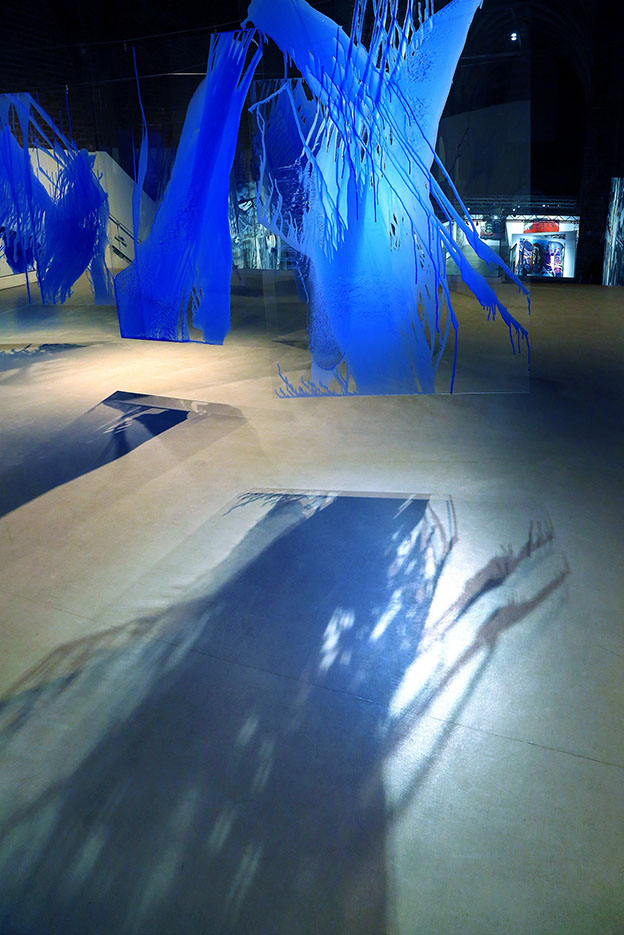
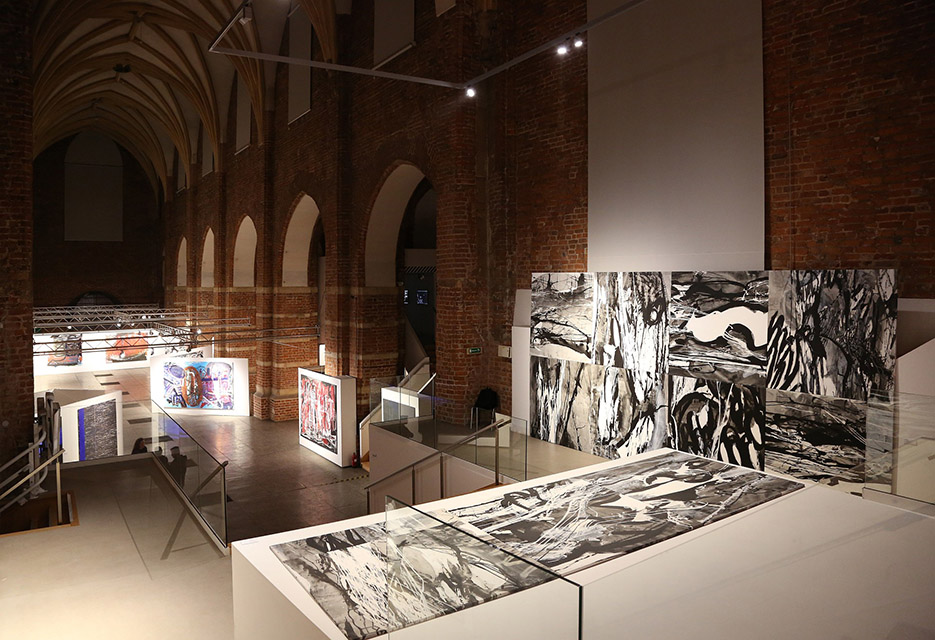

Wilk(波兰)-波兰人在中国9-水墨-53x75cm-2012(上苑艺术馆收藏)
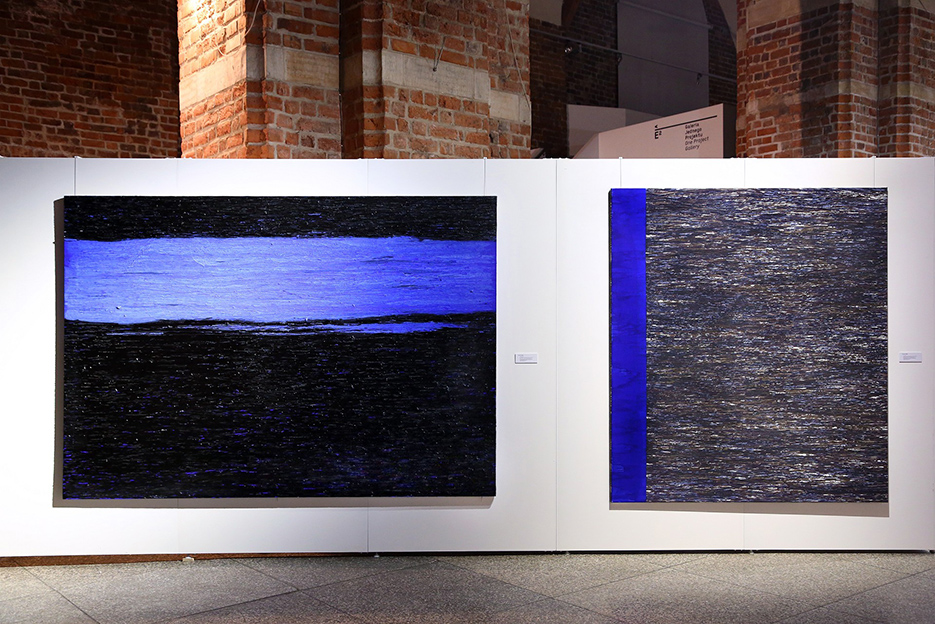

作者自述:
Sławomir Marzec
On the
borderlines of visibility
and
again
stillness ensues,
and the mystery
of that sheer
clarity, is it water indeed,
or air, or light
Denise Levertov1
Only
when I started my work I realized how difficult it is to write about Urszula
Wilk’s artistic output. Its abstract character, formal simplicity and
faithfulness to one’s own gesture seemingly bring a wide range of possible free
interpretations and metaphorizations. On the other hand, the perspective of
traditions from the Far East, the mysticism of the West, informalism or
neodesign aesthetics irresistibly impose their presence. Some of her works can
also be included in the category of landscape architecture, which after all is
more and more situational, ephemeral and symbolic. And on the other hand: how
to capture the mark of the individualism in her works, which by principle
escape all kinds of definiteness? How to identify subjectivity which endlessly
questions itself through universalizing or accidental gesticulation? And all
this is intensified even more by the artist’s restrained self-commentaries.
Additionally, my anxiousness increased when I read a great essay by Marek
Śnieciński devoted to Urszula Wilk2.
Therefore, it is quite a big challenge, but what do we have the concept of mission impossible for? And the poetry by Denise
Levertov (DL), whose spiritual affinity with the artist from Wrocław is in my
opinion almost unheard-of. Her lines will, like a Greek chorus with its
refrain, give rhythm to the present argumentation.
Today’s artworld
situation made us used to “eventually current” artists, that is the ones who
easily fit in the coming trends, coming “right approaches”. Increasingly seldom
one can encounter artists such as Urszula Wilk, who remain loyal to their own
ideas and intuition. Her starting point takes the form of faith in the elevated
character of direct painting gesture. In the power of experiencing this what is
before language and what is relevant. I will carry out my reasoning from
various points, taking into consideration categories in my opinion crucial for
her painting spaces (e.g. visibility, form, cut, contingency, gesture, etc.).
By the force of circumstances, it will be a draft only. My aim will not be to
“translate” the particular paintings or gestures into a conceptual discourse,
but rather to sketch the perspective allowing, in my opinion, to perceive more
clearly the complexity of situation in which the artist finds her presence. And
also to sketch the consequences put forward by her works.
The majority of mystical attitudes is
based on the idea of integrity. Such concepts are found both in Orphic
initiations of demonic depth of our soul and in Platonic desubjectification
towards immortality, and probably also in Gorgias’s duality of everything
(sic!). More contemporarily, in turn, in Romanticism instigating the experience
of abyss and immensity. And also genius. The echo of this approach is also
found in avant-garde, in its hope that the new form will open new and more
complete meanings and feelings. Urszula Wilk fits in these various and complex
traditions. She initiates certain games and perhaps – even less discoursively –
only concatenations, clashes of occurrences, emptiness and unlimited freedom of
the painting gesture. The concatenations of fullness and emptiness, of
universal and accidental. Mutually inseparable and complementary, like Yin and
Yang, like Good and Evil.
I again trouble the envisioned
pool (DL)
Of
course, the analogy to painting techniques of Taoism and Buddhism imposes its
presence here. Some records concerning peculiar Chinese Ink-Wang mysteries of
spilling black ink at the white canvas date back as early as to the 7th century
AD. Canvasses that juxtapose the emptiness with form like in the later ukiyo-e
images. After all, existence and non-existence give
birth one to the other (Laozi3). It manifests metaphysics that is
completely distinct from our own, and distinct imagination, because the
concrete is created there through distorting and damaging the unity. Therefore,
the painting gesture, by breaching the potential fullness of the emptiness,
paradoxically makes it more real but only as… a delusion. Tao wisdom consists
in a simple, spontaneous interaction between natural cycles. In not acting
(wu-wei), which does not denote passiveness but overcoming the calamitous
subject/object dualism. It organically situates us with respect to the unity
rather than the concrete (form). The purpose of wu-wei is peace, which results
from the compliance with the rhythms of natural energy flows, instead of Platonic
motionless possession of truth as the only and ultimate form. Inspirations with
the Far East are clearly visible in Wilk’s art, where every other gesture
organically “orders” the accidental occurrence of the previous one. Of course,
similar intuitions may be found also in Stoic logos or Heraclitus teaching
about the sense which multiplies itself. And
that the impenetrable is penetrated by the
impenetrable4.
Equally interesting parallels may be created with respect to the Kabbalah
tradition. Especially the concept of hebel (futile
vanity) of Kohelet harmonizes with the Buddhist sunjata.
how can I focus my flickering
(DL)
The 20th century made us realize that
we lost the common perspective of seeing, we lost the common visibility. We
replaced it with endless flickering of various demands, usurpations and
marketing. And with scattered images (Benjamin). The artist today faces the
alternative – whether to get involved in this game of flickering or whether to
go beyond it with excess or ascesis? The artist from Wrocław seems to select
even a distinct approach, that is to remain on the edge of visibility. Even
more precisely: in moments defined by Didi-Huberman as moving from visuality to
visibility. Visuality is direct, oblivious, natural. And visibility constitutes
cultural iconographic community. Visuality happens through IS, through
inconceivable and cosmic. Visibility, in turn, is created by PRESENCE – it is
always interim, mediated, participating. In my opinion, Urszula Wilk’s
paintings are located within the borders of this IS, which does not change into
the presence but escapes it. And at the same time, it also wants to exist. Even
as a trace, suggestion or feeling. Of course, such a general approach imposes
questions concerning the unity, the visibility as such. Naturally, the
pervasive look is impossible and unimaginable. Extra-human. Particularly in the
world ravaged by the so called philosophy of superstitions. Therefore, the
attempt to experience the paradoxical “unity” somehow from the other side –
from nothingness, anomie, emptiness -– is some kind of a solution. As the
negative aspect of emptiness whose synonym in painting is represented by the
whiteness of the painting support.
Changes
in the contemporary times coerce searching for a new understanding and
perception of form. It is a very important task for the contemporary art. The
form is not a conclusion any more but a process-like display of irreducible
changeability, complexity and plurality. With similar focus we should also
bring the importance back to what is unspeakable, potential or impossible to
portray. Of course, humans have made similar attempts since the beginning of
time. However, we discover anew e.g. Baroque, whose realism rapidly changes
from the blackness of nothingness into the blackness of infinity. Similarly
like the whiteness of fullness changes into the whiteness of emptiness in
Japanese ukiyo-e images. Or impressionism,
which makes an attempt to capture and portray the idiom of a particular moment.
An accident was considered to be the anchor of what is unitary and exceptional.
So was a mistake. Therefore, the 20th century art, and in particular
avant-garde, strongly believed in the emancipating and creative power of
causing anomalies. The accident was introduced to art among others through the
strategies of ephemeralness (impressionism), fragmentariness (collage),
ecstasy, experiment or the concept of game.
Urszula
Wilk’s art gently resonates with today’s challenges. And what above all makes
her painting ritualizations and mysteries up-to-date are the multidimensional
clashes between the accident and the adventitiousness. In brief, accidentality
means unpredictable freedom and chaos. Adventitiousness, in turn, is
customarily attributed to postmodernism. It is a situation when by acting
without principles, or rather acting by creating the principles, with every
other step we limit our possibilities. The previous gesture somehow suggests,
programs, and later even forces the following one. At this point, another
category important for interpretation of Wilk’s paintings appears – the clash
between “is” and “happens.”Tradition made us face the choice between two
metaphysical perspectives: linearity and cyclicity. Currently, more and more
often the occurrence of events understood as the unordered sequence of
peculiarities imposes its presence (e.g. Deleuze, Badiou). The tangram, a
Chinese game changing its own rules, i.e. per
analogiam: the way in which the image is created coincides with the
image itself, should also be mentioned here.
In
Urszula Wilk’s artistic output, the necessity would be represented by the marks
of gravity (water stains), the unchangeable natural character of gravitation.
Hence, a primitive gesture being the basis of the symbolic dimension of our
existence was probably represented by lifting a stone up. Defying the natural
inertia. In turn, the accident would be manifested here by unpredictable scraps
of strong hits. Their accumulation and multiple layers. And adventitiousness
means elusive preferences included in the unawareness of the spontaneous
gesture. An attempt to visualize the unawareness was already made by
surrealists using the so called automatic writing strategy. It seems that it is
directly referred to also by Wilk in her Niewysłane
listy (Unsent letters) cycle.
Sometimes, she also makes the situation more complicated when, like
watercolorists, she “gravitates” with the picture in the course of painting. By
changing the position of the painting she alters the directions in which the
paint is dripping. The so called dripping changes into stylization, the
accident and the necessity that are “ordered” altogether. And it is only the
author’s decision that specifies anew where the “bottom” of the painting is,
where our “naturalness” is.
She
consistently juxtaposes any kind of definiteness (form) with the lack of it.
With emptiness which scrutinizes the definiteness. Even a declared materialist
Žižek recently has written that every definiteness includes some elements of
emptiness which scrutinizes it from the inside5. Here, the additional emptiness may
also be complemented by excess, by the density of form. Hence, through
overabundance we also lose orientation. They together create breaches and
suspensions in the unstoppable palimpsest of forming our visibility.
the cloudy nebulae form and
disperse (DL)
The
artist juxtaposes the world of necessity and accident with hardly visible
rhythms, regular repetitions, conscious stimulated densifications, modulating
contrast or the multidirectional dripping. On the other hand, perspective and
illusion of depth are replaced by multidimensionality. Shortly speaking, she
ultimately contrasts this world with aestheticism – the gesture of creating
compositions, searching/establishing the harmony. It will sound rather
paradoxically in the times of ever omnipresent criticism, but aestheticism can
also be an emancipating and creative form. Forgetful of paralyzing mediations,
multiplication of layers and loops of our culture, Urszula Wilk directly refers
here to intuition. Hence, the intuition is the medium in which (anti) images of
mysticism from the East and the West take the shape of aestheticism.
Moreover,
it is the aestheticism somehow in the pure form – primitive, archetypical, and
not styling. And the cornerstone of the abstraction was not only represented by
the modernizing avant-garde but also equally by the pantheistic theosophy. And
its cardinal principle of searching for the hidden harmony of everything. A
widely discussed distinction between Wolfgang Welsch’s general and derivative
aestheticisation was the echo of this approach6. The first concept is the basic
principle of the pre-conscious ordering of space and of the whole economy of
perception. The German philosopher opposed it with the derivative
aestheticisation understood as beautification. Of course, the images described
here resonate also with other aesthetics. Quite a significant function is
undoubtedly played here by Japanese Wabi-sabi aestheticism, which accepts
imperfections of the world of things. And forms. As well as the awareness of
their state of alteration and continuous incompleteness.
The
concept of form is another issue characteristic of this artistic output.
Recently, the vitality of art has been related to the change of formal approach
into the so called problematic one. However, it turns out that it can be
equally subject to routine and thoughtless. Hence, the growing popularity of
clinamen or subversion strategies, which are conscious that schemes and
formalizations are inevitable and it is necessary to outsmart them. Playing
with the schemes. According to this perspective, what comes with an
invigorating force are the (post) formalist aesthetics redefining Heinrich
Wölfflin’s (art as a depiction of subjective ways
of seeing7) or Roger Fry’s
(art as significant deformation8) deliberations that analyze the
economy of eye along with moods, emotional states, personalities, etc. which
modulate it. The concept of form and regularity recurs. It may also be found in
the works by such prominent artists as Anish Kaoor or Tony Cragg. Urszula Wilk
seems to fit into this tendency. She does not gamble on a new status and
redefining the form itself, but rather more radically – modalities of the
existence of the visibility itself. Their relation with amorphy and polymorphy.
And also with Welsch’s anaesthetics, which analyses the mechanisms of
disappearing visibility. Such interests make us face the impossible: how to
paint a static image of unimaginable unity? And the unity perceived as a
dynamic process? Lyotard’s strategy of palimpsest, where the following images
displace the ultimateness of the previous ones, may be helpful here. This may
be also the purpose of relocating paintings during exhibitions and recomposing
already completed paintings anew. Or juxtaposing newly-created fragments
according to the principle of a patchwork.
you
are given the questions of others
as if they were answers (DL)
Year 2008 is a relevant caesura in the
development of the artist’s paintings. Namely, a prominent move from one
“completed” painting to the plurality of paintings, their simultaneous
character and movability, appears. It also leads to other issues: finiteness
and the wholeness of a painting, the status of its decomposed parts. What is
the cut creating it? The tear in the curtain of delusions or another curtain?
Uncovering the depth or only the layer of illusion, the layer of surface
(Deleuze)? These questions are cumulated in the concept of cut as an
assemblage, the fundamental principle in modernism. As the change of static unity
into a dynamic collage. Here, Wilk’s undisputed roots connecting her with the
European avant-garde tradition can be seen. Connecting her also with the search
for the form through experiment and the game of accident. And sometimes also
through the whim. However, she is distinguished by a postmodern desire to avoid
the ultimate form. It may be achieved e.g. through the transparent supports of
the newest paintings, which while hanging in space are to create
background-less permeation of surfaces. The principle of all-over composition,
without a dominant, without the figure and ground opposition fundamental for
the West, is also to serve the same purpose. And even when the aforementioned
opposition appears it is immersed in ambiguity. Because it is not entirely
certain what the backgorund is and what the figure is. Perhaps, the outside
blackness defining the shape of bubbling grey stains located in the centre
(like in the cycle of works from 2010) is the figure?
Urszula
Wilk consistently complements the opposing perspectives. She strives to
complementarity. Hence, as mentioned, she complements the assemblage-like cut
by decomposing some paintings during exhibitions. The play of fragments is
complemented by the game of unities (plural). This game has yet another form at
the “micro level”. Increasingly often, it is possible to find lines in her
paintings, the synonym of division, differentiation and cutting, which when
multiplied changes into a shivering surface (like in Blumetries cycle).
Similar approach refers to the
principle of repetition, repetitiveness being the basic principle of our
consciousness. Like a rhythm is the basis of the conscious visibility. Our
modern artistic tradition was shaped by striving to exceptionality and
originality of style. However, the recent century is rather the age of
repetitions. Of various kinds, also the problematic ones. We remember that at
some point Benjamin contradicted the traditional aura of art with its
reproducibility. Urszula Wilk seems to change this opposition into a more
contemporary strategy of redundancy – intensifying by reiteration and
reconfiguration of the same stimulus or impression. She reiterates specific
gestures using her brush, multiplying its traces into regular arrangements of
semi/ornaments. Reiterating them with a different color and different
dilutions.
black water traced, behind it,
an abandoned gesture (DL)
The aforementioned transition from one
painting to a multiplied, cut, displaced image, but also to a resized one,
coincides with the transition to a more intensive work where Wilk applies water
painting techniques. Semitransparent washes and glazes replaced the
non-transparent impasto of paint. And the change of the support from canvas to
paper increased the paintings’ organic finesse. The outcome was transparency of
all gestures, layers and their order. Nothing can be hidden or corrected here.
But everything can be only the basis, the “subtext” in another unity, another
layer of visibility. Another harmonization or more complex interdependence.
The
simplicity and abstract character of forms is accompanied by radical color
asceticism. Usually, paintings play out in monochromes between (not) ultimate
white and (not) ultimate black. Sometimes, a blue color – synonymous with sky
and spirituality – is added, as well as the color of blood and earth.
Sometimes, different shades of grey interlace. And a
nameless color (Newton), hence sometimes we feel some anomy of colors,
inability to identify them. Perhaps, Laozi’s warning – the abundance of colors blinds the eye9 – resonates here again.
By creating monochromes (for example
of blue), the artist makes a dispute with various forms of its existence.
Therefore, glazes, washes, impastos, textures, whitening, diffusing hues and
their intermittency appear. Subtle contrasts or rather modalities, not familiar
for our visibility, can be observed in the paintings. Clean shades of black are
sometimes opposed to diffused ones, which reveal shades of grey hidden in them.
Hence, their gradations create not the illusion of space, but they rather
suggest or promise it. This symbolic morphology of paint clashes with the
rhythm and a firm gesture, as well as with the densification of (not) forms –
marks. However, above all else, the color clashes with not/color of whiteness, this
synonym of emptiness/nothingness/fullness. Moreover, the potential, primitive
whiteness featured by the painting support is confronted here with the
derivative whiteness created with paint. It is the same but also a different
whiteness because it covers and destroys, it is negative, concrete through the
act of negation and coverage. Through this process, the whiteness preserves its
ambiguity – as an emptiness/fullness, potentiality and happening concreteness.
some inflection of light, some
wing of shadow (DL)
Therefore, what in this context is the
painting gesture itself? The gesture as the game or as the act of disputing?
The principle of game was replaced in art by the logic of mimesis, symbolicity,
and later by the expression. Also as today’s provocation or subversion.
Currently, a radical and dynamic understanding of the game seems to prevail. It
is rather the game that dominates the player and in fact it is the game that
creates the players. We do not so much play in something or for something as we
ourselves are played. Playing the game, that is the performativity itself,
becomes a basic economy of being in the world of a global spectacle. The
opposite of the game is gesture. It includes a self-realizing singularity. The
gesture expresses a mannerism – a learned or natural display of emotions. It
expresses the initial, formative approach to oneself, to the world and other
people. Already Plotinus claimed that experiencing the process of being born
through one’s own mannerism (as ethos) is the only happiness of human. The self-determining gesture was later also the
basis of Informel aesthetics. Moreover, it was also in compliance with the
spirit of existentialism which was popular at that time. The reappearing organic
development concept tells us to respect the perceivable regularity of changes,
but also the synchronic elements included in a single gesture. The gesture
avoids an unambiguous decision or choice, it leaves the space for both feelings
and archetypes. The schematism and rebelliousness. It may create a flickering
spontaneity but also a ritual initiation. It allows to avoid the freezing in
form and meaning.
in veils of inattention, apathy,
fatigue (DL)
All this
complex ambiguity of the gesture can be found in Urszula Wilk’s art. She
clashes the temporary character of the gesture (and presence) with the
durability of a mark. This paradox is expressed through “illegibility” of
forms, in their languishing on the edge of the accident, irrelevance and
unmeaningfulness. It makes us realize, it reveals the mechanisms creating the
visibility, the aforementioned changing of visuality into visibility. The
gesture, somehow by the force of matter, implies the concept of a scale.
Therefore, a kind of re/scaling of paintings is instigated here. Beginning from
the painting gesture, which reflects the scale of the human body, the painter
confronts it with fragmentation (cutting of the painting), but also with the
space of interiors or rather with luminal spaces (e.g. the project at the
airport in China). As well as the general space, when paintings/covers were
hung on building facades. There, the freedom of the gesture was complemented by
the unpredictable game of moves caused by wind (Lines,
Shang Yuan 2012). A game of mere irrelevances, of what is commonly considered
to be irrelevant, unimportant, intangible and what does not enter the sphere of
our visibility appeared there. Like moving air, like elusive shadows
overlapping canvas. It altogether results in both layered marks and live
presence of various moves – the painting gesture, wiggling wind or the cosmic
movement of the planets (shadows), which commonly display what is the only real
thing: changeability. Altogether, they change the painted surfaces into solid
figures and a moveable spatiality. They also restore the nonfinite character of
the paintings. Somehow by accident, a paradoxical complementarity of the
visible and the invisible appears.
the flow of light, the dancing
pilgrimage of water (DL)
Urszula Wilk’s paintings constitute
the space of movement and presence, whose traces evoke the feeling of other
existence forms. They create a revitalizing intermedium, which resets our
ability to imagine things. This art makes us abandon reactivity, it changes the
viewer into a witness of a peculiar soliloquy, that is a stage conversation the
artist holds with herself. The witness to a gesture mystery that releases the
flow of subconscious feelings and thoughts. Her paintings are the concatenation
of nameless forms and unspecified luminal spaces existing below or above our
current visibility. And when they appear more clearly, they are given in
plurality, in multiplication and ambiguity which invalidate their concreteness.
Which discredit their visibility.
Of
course, the cultural economy of recent decades is truly inherent in the
imperative of hyper-activity and agential criticism. According to this
perspective, “allowing the wind to exist” is not a heroism but rather
helplessness or pure aestheticism. However, to overcome the contradictions of
the contemporary world we must go beyond the understanding of form existing
until now. We face the necessity to create its new dimensions, not only
technological ones, but also the symbolic and conceptual ones. And moreover, as
Roman Ingarden used to say, art is perhaps the conscious
acting in favor of incomprehension10. Because it perhaps does not have new
meanings, but only the rush and vigor of searching for them? Perhaps what
remained is only waiting for the meaning (Odo
Marquardt11)? Or maybe Hölderlin was right
claiming from among the storms and ecstasy of Romanticism that peace is the
sense of art? Luckily, we do not know the answer to these questions, therefore
art is still needed. Even necessary!
question not answered but given
its part (DL)
1 › All fragments of Denise Levertov’s
poetry were derived from: Denise Levertov, Sands of
the Well, New York 1996 and from online publications of Levertov’s
poems.
2 › A text published in Urszula Wilk’s
catalogue, Wrocław 2013.
3 › Lao-Tsy, Wielka
Księga Tao (The Great Book of the Tao), Warsaw 2009.
4 › See: Ernst Cassirer, Esej o człowieku (An Essay on Man), Warsaw 1998.
5 › See Alain Beaulieu, [in:] „Kronos”,
vol. 3/2016.
6 › Wolfgang Welsch, Estetyka poza estetyką (Aesthetics Beyond Aesthetics),
Cracow 2005.
7 › After: Lambert Wiesing, Widzialność obrazu (The Visibility of the Image),
Warsaw 2008.
8 › After: Anne D`Alleva, Metody i teorie historii sztuki (Methods and Theories of
Art History), Cracow 2013.
9 › Lao-Tsy, Wielka
Księga TAO (The Great Book of the Tao), Warsaw 2009.
10 › After: Joanna Winnic-ka-Gburek, Krytyka, etyka, sacrum, Gdańsk 2015.
11 › Odo Marquard, Apologia przypadkowości (In Defense of the Accidental.
Philosophical Studies), Warszawa 1994.
查看4471次
|
